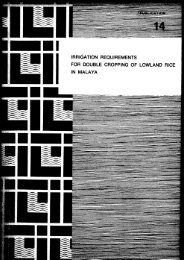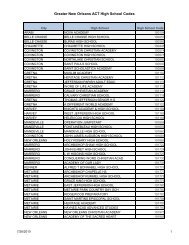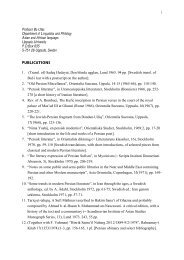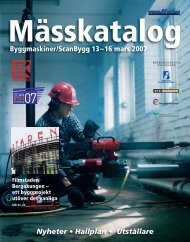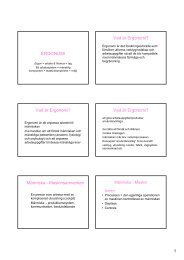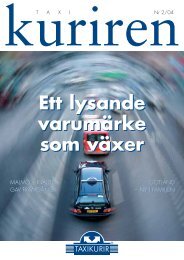Air Systems Datasheet - Scout Mk2 - Thales Group
Air Systems Datasheet - Scout Mk2 - Thales Group
Air Systems Datasheet - Scout Mk2 - Thales Group
Create successful ePaper yourself
Turn your PDF publications into a flip-book with our unique Google optimized e-Paper software.
SCOUT <strong>Mk2</strong><br />
General<br />
SCOUT <strong>Mk2</strong> is a unique surface surveillance and tactical<br />
navigation radar that has true Low Probability of<br />
Intercept (LPI) characteristics. The SCOUT <strong>Mk2</strong> radar<br />
uses the Frequency Modulated Continuous Wave<br />
(FMCW) principle enabling to ‘‘see without being seen’’<br />
due to the extremely low transmitter power. This feature<br />
makes interception by ESM equipment or Anti Radiation<br />
Missiles virtually impossible.<br />
The outstanding LPI characteristics of SCOUT <strong>Mk2</strong> make<br />
it an excellent choice for covert operation. Just like<br />
passive-optical systems, SCOUT <strong>Mk2</strong> can be used under<br />
radar silence conditions, but has both a range and allweather<br />
advantage over optical systems.<br />
SCOUT <strong>Mk2</strong>’s range resolution cell size of only 6 metres<br />
at 12 nm not only results in an excellent capability to<br />
distinguish closely-spaced targets, but also offers good<br />
detection of small targets in heavy clutter.<br />
While in the past decade, low visibility has gained an<br />
ever-increasing interest in platform design, SCOUT <strong>Mk2</strong><br />
lends its user an open eye to the surroundings, even<br />
under strict EMCON conditions.<br />
www.thalesgroup.com<br />
A lightweight and versatile radar like SCOUT <strong>Mk2</strong> can be used in<br />
many other roles in both static and mobile applications.<br />
These include: littoral surveillance and coastal defence, harbour<br />
and river surveillance, battlefield surveillance, counterdrugs<br />
operations, helicopter approach radar, etc.<br />
Main characteristics<br />
• Low Probability of Intercept, with selectable transmit power,<br />
down to as little as 10 mW<br />
• Extremely high range resolution<br />
• High reliability, low weight and safe maintenance (no lethal high<br />
voltages) due to completely solid-state design<br />
• Low Radiation Hazard<br />
• Can be integrated with I-band pulse navigation radars, using<br />
SCOUT <strong>Mk2</strong> Antenna System for pulse and LPI operation<br />
• May be used stand-alone or integrated with a C2 systems.<br />
By courtesy of the Royal Netherlands Navy
Technical Aspects<br />
SCOUT <strong>Mk2</strong> operates in I-band (former X-band). The<br />
transceiver is located in the dual array antenna to prevent<br />
unnecessary losses in long waveguide runs. This also ensures<br />
ease of installation. The connection to the below deck equipment<br />
is made by a single, thin cable. There are no waveguides<br />
present, unless the system is combined with a pulse transceiver.<br />
The dual array antenna guarantees optimal isolation<br />
between the receive and transmit path, which is essential for<br />
good long-range performance of an FMCW radar. Due to the<br />
fully solid-state design, MTBF is in excess of 10,000 hours.<br />
Configuration<br />
SCOUT <strong>Mk2</strong> is available as a stand-alone system or as a fully<br />
integrated navigation and LPI radar system. The radar has<br />
been integrated with several navigation radars while integration<br />
is possible with most commercially available navigation radars.<br />
Video data and track data are available for integration with a<br />
Command & Control systems.<br />
Performance Data<br />
The maximum instrumented range is 24 nautical miles. Detection<br />
range is normally limited by the horizon. Due to the continuous<br />
wave transmissions, the minimum range is unusually<br />
short, as little as a few metres.<br />
Technical Data<br />
Frequency band : I-band<br />
Transmit Power : 10 mW to 1 W (operator<br />
selectable)<br />
Antenna gain : 29.5 dB<br />
Horizontal beam width : 1.4º<br />
Antenna rotation speed : 24 rpm<br />
No. of range cells : 3641<br />
Range cell size : 3 m (at 6 nm scale)<br />
Range scales : 6, 12 or 24 nautical miles<br />
Dimensions and Weights<br />
Width Height Depth Weight<br />
(mm) (mm) (mm) (kg)<br />
Antenna System 1888 608 - 77<br />
Processor Unit 460 636 450 38<br />
Power Requirements<br />
115 V, 60 Hz, 1 phase, approximate load 400 VA.<br />
Environmental Conditions<br />
The design and construction of the equipment are based on<br />
current British and U.S. military standards for shipborne equipment.<br />
Ambient temperatures<br />
Above deck equipment: -25 . +49 ºC<br />
Below deck equipment: -5 .. +49 ºC<br />
Surface Radar<br />
System Overview<br />
SCOUT <strong>Mk2</strong><br />
Processor Unit<br />
ARPA Display*<br />
* part of navigation radar<br />
SCOUT <strong>Mk2</strong><br />
Antenna System<br />
incl. FMCW<br />
Transceiver<br />
Pulse Transceiver*<br />
(Option)<br />
VIDEO + TRACK DATA<br />
TO C&C SYSTEM<br />
ADDRESS<br />
SCOUT <strong>Mk2</strong><br />
For covert operation<br />
THALES NEDERLAND<br />
P.O. Box 42<br />
7550 GD HENGELO<br />
THE NETHERLANDS<br />
Phone : +31 (0)74 248 81 11<br />
Fax : +31 (0)74 242 59 36<br />
THALES<br />
7/9 rue des Mathurins<br />
92221 BAGNEUX CEDEX<br />
FRANCE<br />
Phone : +33 (0)1 40 84 40 00<br />
Fax : +33 (0)1 40 84 33 81<br />
THALES NEDERLAND B.V. and/or its suppliers. This information carrier contains proprietary information which shall not<br />
be used, reproduced or disclosed to third parties without prior written authorization by THALES NEDERLAND B.V. and/or<br />
its suppliers, as applicable.Data on this sheet may be subject to change without notification. DS.030/09/08/H





